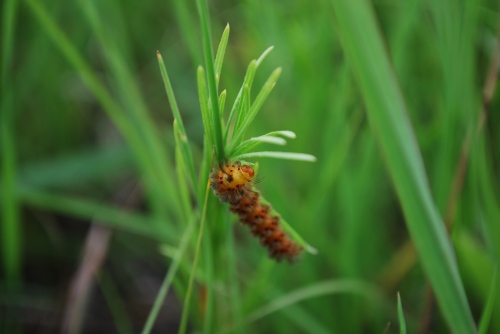Updated: 24/04/2024
Walk through a grassland at the peak of summer and you will quickly become aware of how many grasshoppers inhabit the area. But what effect do these grasshoppers and other insect herbivores have on the plant community you are walking through? How does the effect of invertebrate herbivores compare to that of less visible, but also ever present small mammal herbivores? And do these effects depend on the availability of resources? In our study, “Invertebrate, not small vertebrate, herbivory interacts with nutrient availability to impact tallgrass prairie community composition and forb biomass”, now on Early View in Oikos, we aimed to address these questions through an experimental study within a tallgrass prairie ecosystem in eastern Kansas. We factorially manipulated the presence of both invertebrate and small vertebrate herbivores and the availability of soil nutrients and observed changes in plant community composition and productivity over five years.
We found that removing invertebrate herbivores had a profound effect on plant community composition after a few years of treatment. Forb species increased in abundance in the absence of invertebrate herbivores, while grass species decreased. This effect was particularly strong under conditions of elevated nutrient availability. Surprisingly, small vertebrate herbivore removals had no detectable effect on grassland plant community composition or aboveground biomass.

A caterpillar chows down on a whorled milkweed (Asclepias verticillata), a plant species that greatly increases in abundance when invertebrate herbivores are removed from tallgrass prairie
Perhaps most interestingly, dispersion in community composition among plots where both invertebrate herbivores were removed and nutrient availability was elevated increased compared to the control plots. That is, different forb species came to dominate the replicate treatment plots, likely dependent on initial community composition. Overall, our research points to the important, and often overlooked, role that invertebrate herbivores play in structuring grassland communities. Future research aimed at continued investigation of the effects of invertebrate herbivory on plant communities would be worthwhile.
